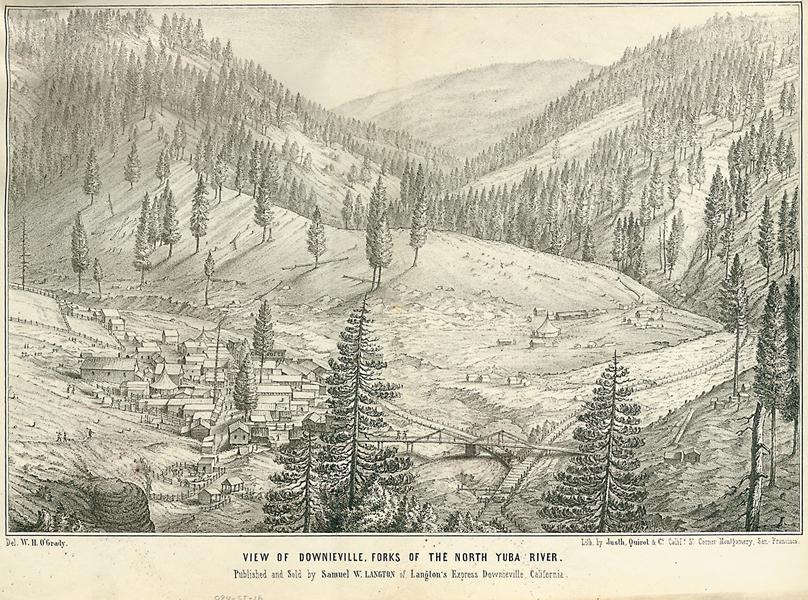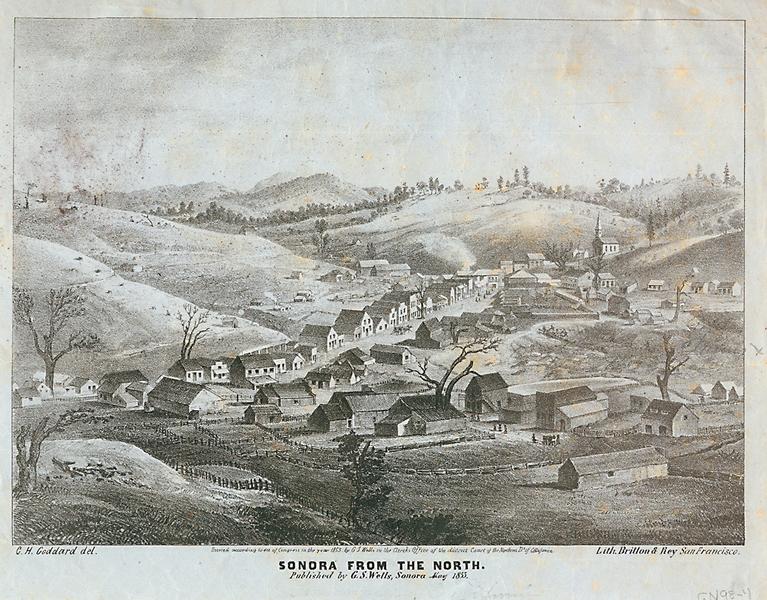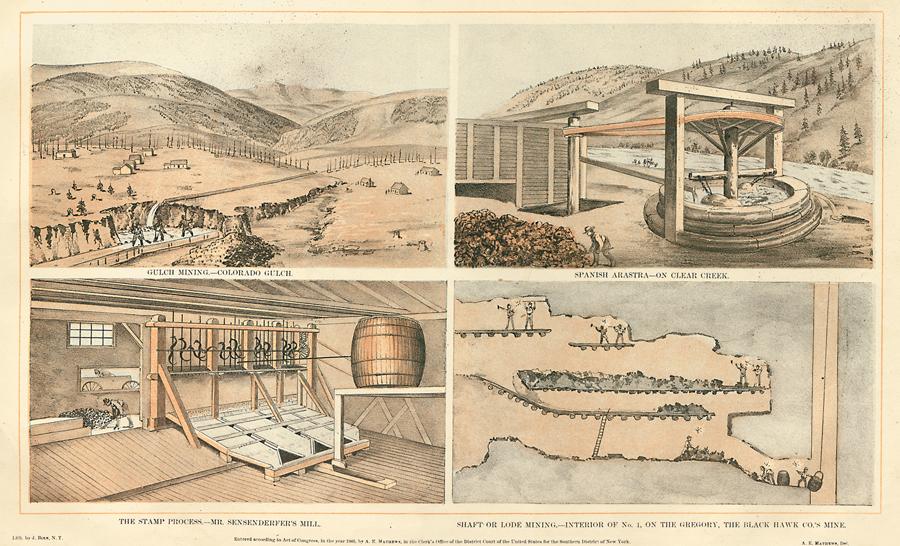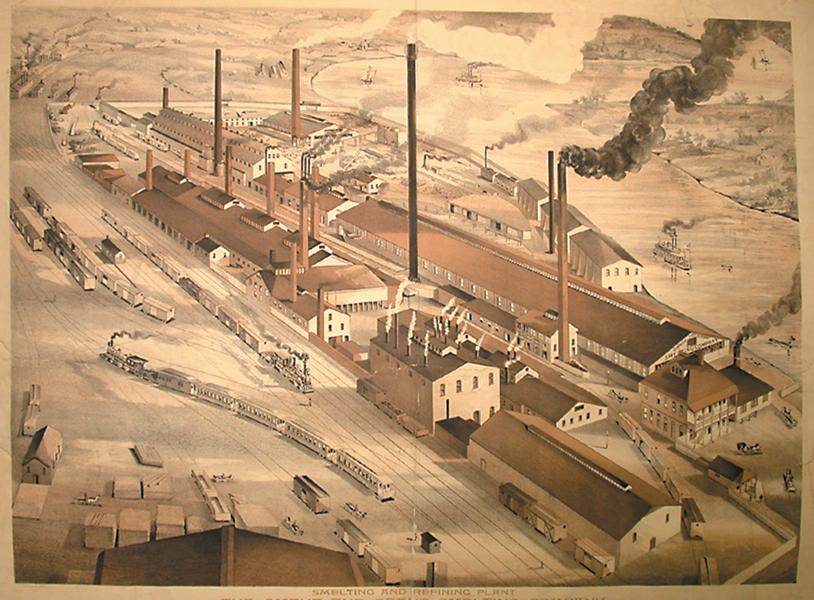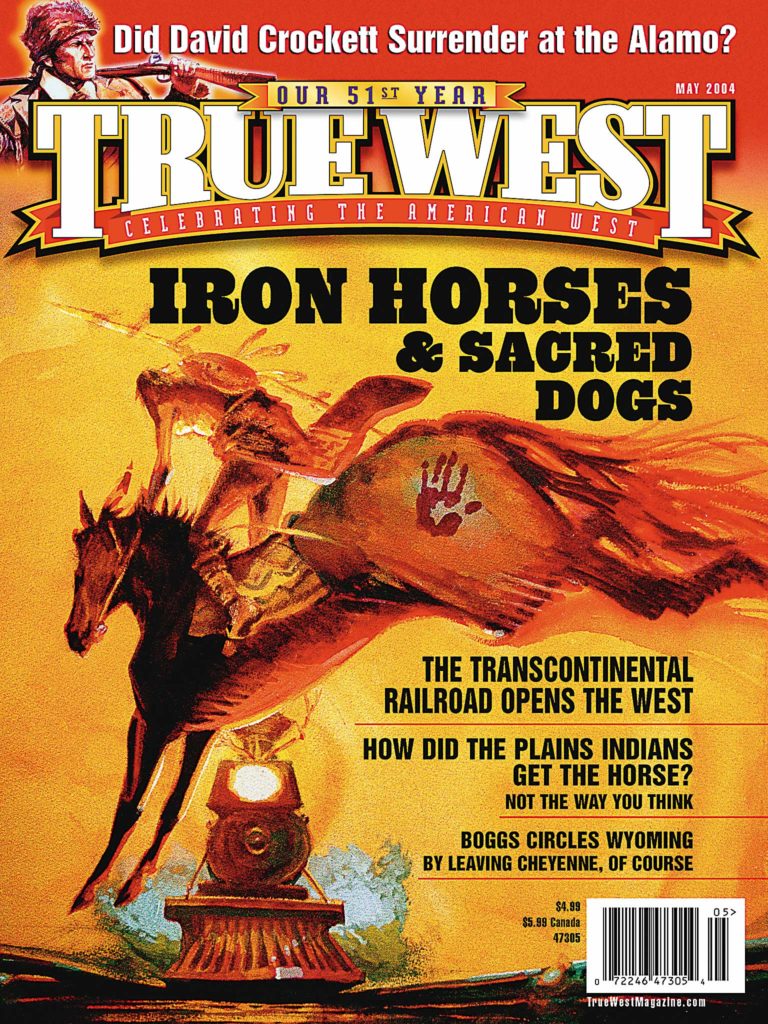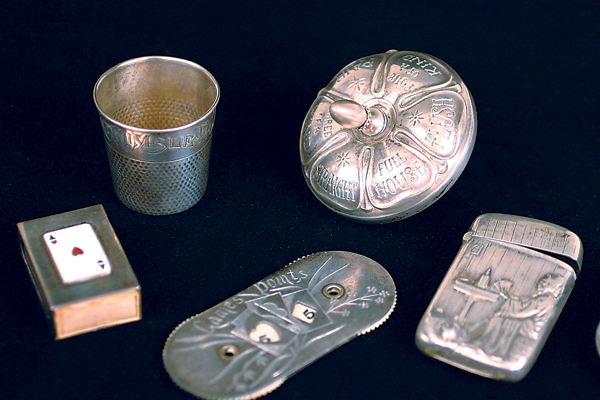
If a miner wrote back East of his adventures, he may have sealed his message inside a pictorial lettersheet depicting a bird’s-eye view of the company he worked for or the boomtown he had traveled to in hopes of striking it rich.
Unlike photographers whose images portrayed Western towns with warts and all, lithographers were free to exaggerate a town’s prowess in aerial views that they drew without ever leaving the ground. The same was true for drawings of up-and-coming ore refineries, such as the Omaha & Grant Smelting and Refinery Company, which commissioned aerial lithographs that likely helped crystallize its status as the “largest establishment of the kind in the world,” according to the Nebraska State Gazetteer’s 1890-91 business directory.
Bird’s-eye view lithographs became popular after the Civil War, and they were drawn by artists such as George Henry Goddard, a surveyor in Sacramento, who was responsible for creating the first reliable map of California in 1857.
Collectors who enjoy tracing the transformation of the Western landscape unearthed quite a cache of lithographs from Holabird Americana on February 28. The auction was held in Reno, Nevada, where today’s riches may pay out from a slot machine or high stakes poker game, instead of a vein of gold.
Downieville, California
Downieville grew out of a mining camp near the forks of the Yuba River after Maj. William Downie and his party settled in this California spot in 1849, as Downie recorded in his 1893 book, Hunting for Gold. After rich strikes, including an ore claim that yielded $80,000 in six months, the boomtown swelled to over 5,000 people in 1851. Only three copies of this 1849 lithograph by William H. O’Grady are said to exist, making this circa 1955 lettersheet a rare specimen; $1,900.
Sonora from the North
Sonora from the North shows mostly treeless hills and a long, wide dirt street in this circa 1953 lettersheet that was first printed in May 1853 and is one of nine known to exist, according to California Pictorial Letter Sheets: 1849-69 written by Joseph Baird. The artist who painted this center of the Southern mines, George Henry Goddard (mislabeled on sheet as C.H. Goddard), was an Englishman who settled in Sacramento in 1850 and died on December 27, 1906, shortly after the San Francisco earthquake; $750.
Photo Gallery
Downieville grew out of a mining camp near the forks of the Yuba River after Maj. William Downie and his party settled in this California spot in 1849, as Downie recorded in his 1893 book, Hunting for Gold. After rich strikes, including an ore claim that yielded $80,000 in six months, the boomtown swelled to over 5,000 people in 1851. Only three copies of this 1849 lithograph by William H. O’Grady are said to exist, making this circa 1955 lettersheet a rare specimen; $1,900.
Sonora from the North shows mostly treeless hills and a long, wide dirt street in this circa 1953 lettersheet that was first printed in May 1853 and is one of nine known to exist, according to California Pictorial Letter Sheets: 1849-69 written by Joseph Baird. The artist who painted this center of the Southern mines, George Henry Goddard (mislabeled on sheet as C.H. Goddard), was an Englishman who settled in Sacramento in 1850 and died on December 27, 1906, shortly after the San Francisco earthquake; $750.
Englishman Alfred E. Mathews headed west in 1865. This lithograph by him depicts four Colorado mining scenes (from left, clockwise): the Colorado Gulch, an early view of Leadville; a Spanish arastra, with a round stone base and two levels of fitted stones that held water, ore and two huge dragging stones, built in 1865-66 in Clear Creek, near the mouth of the Gregory Gulch; view of the Gregory, Black Hawk Co.’s mine, where nine men worked in a stope, an excavation formed by ore removal; and Mr. Sensenderfer’s 20-stamp mill with sloping mercury amalgamation tables, which Mines of Colorado writer O.J. Hollister reported had “steam and water power in good order, running and paying”; $1,200.
As one of the first businesses in Omaha, Nebraska, Omaha Smelting Works opened along the western bank of the Missouri River in 1870. Twelve years later, the company merged with Grant Smelting Co. of Denver, Colorado. (Visitors to Colorado’s Denver Coliseum are on the site of the Omaha and Grant Smelting and Refinery Company, where smokestacks once towered 350 feet to the sky.) This circa 1882-90 duotone lithograph depicts the Omaha smelter, which processed 50,107 tons of ore in 1889. The company’s year-end accounting statement showed over $16 million in profit; $1,600.


